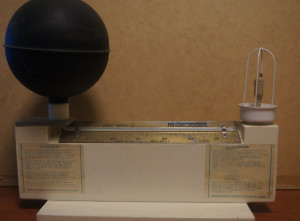What is a Heat Stress Index?
- By Ross Di Corleto
- 22/02/2014
- No Comments
In simple terms, a heat stress index is a method used to estimate the impact of the thermal environment on a person. Some have estimated that there are sixty plus indices in use around the world (Parsons 2003). They vary from very basic indices which are simply calculated to those that are highly complicated, requiring a computer. There are three types:
- Empirical
- Direct
- Rational
Empirical indices have been developed from responses of individuals in relation to strain, who are exposed to a number of different controlled environments. This information is then used to develop a model which can be used to predict overall responses to differing thermal environments. This type of index can be quite subjective. Examples include: Effective temperature (ET) devised by Hougton & Yaglogou in 1923 and corrected effective temperature (CET) modified by Vernon and Warner in 1932.
Direct indices use environmental measurements taken with an instrument relevant to humans in the thermal environment. The most common of these is the Wet Bulb Globe Temperature better known as the WBGT method. This was developed by the US Military in the 1950s to help reduce casualties in the Marine Corps. It has been designed as a simple index which is easy to use and provide a quick result for diagnosis. It achieves this goal, hence its adoption by some Regulators and its popularity in industry. Some consider that this has been done as a compromise between the need for a precise index and the need to be able to easily control measurements in an industrial setting (Parsons, 2003; Budd 2008).
Rational indices are based on the heat balance equation and tend to be more complicated. They involve more than one equation and in most cases require an aid such as a computer to calculate the final result. Belding and Hatch’s heat stress index (HSI) is one of the simpler forms and can be calculated manually. It uses six equations to arrive at a value which is compared on a scale of 0 to 100 of heat stress. Others include ISO 7933 – Predicted Heat Strain and also the Thermal Work Limit (TWL) developed in Australia. The latter two are claimed to be more accurate but are best calculated using computers due to the number of equations involved.
In assessing heat stress keep in mind that there are many potential variables:
- in the working environment,
- the task undertaken, and
- the individuals involved.
No matter which heat stress index is chosen for use it is important to note that heat stress indices are not safe/unsafe limits and should be used as guidelines only.
Want to know more:
Parsons, KC (2003). Human Thermal Environments. Taylor & Francis.
Budd, GM (2008). Wet-bulb globe temperature (WBGT) – Its history and its limitations. J Science & Med in Sport, 11: pp 20-32.
Bethea, D., Parsons, K. (2002). The development of a practical heat stress assessment methodology for use in UK industry. UK HSE Research Report 008. Her Majesty’s Stationery Office. London.
Brake DJ & Bates GP (2002a). Limiting metabolic rate (thermal work limit) as an index of thermal stress. Appl Occup Environ Hyg, 17: pp 176–186.
Malchaire, J, Piette, A, Kampmann, B, Mehnerts, P, Gebhardt, H, Havenith, G, Den Hartog, E, Holmer, I, Parsons, K, Alfano, G & Griefahns, B (2001). Development and Validation of the Predicted Heat Strain Model. Annals Occup Hyg, 45(2): pp 123–135.

 Copyright © 2025
Copyright © 2025
Leave a Reply